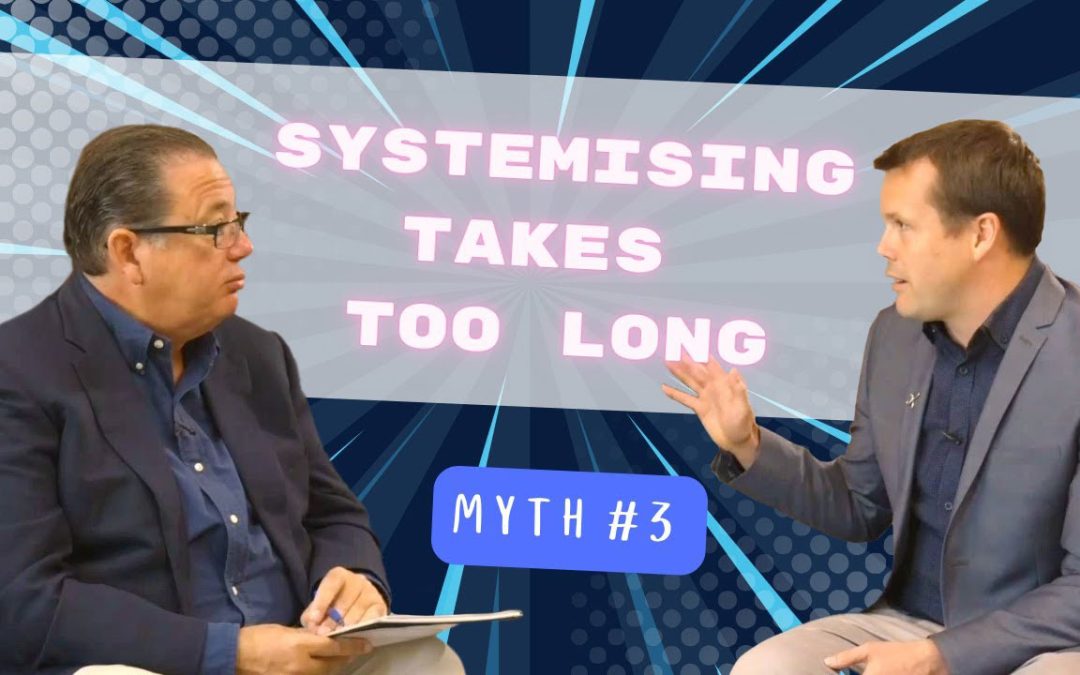When you’re running a business, it can feel like there’s never enough time in the day to do everything that needs to get done.
You might be thinking, “I don’t have the time to create systems.”
The thing is, if you don’t systemise, you become person-dependent—where all of your knowledge is trapped inside one or two key workers. Instead of being organised into a repeatable process that anyone can follow.
Well, the good news is, you don’t have to be the one to do it.
Members of your team can do the systemising for you. Because they have the knowledge, all that’s left is to find the easiest way to extract that knowledge.
In this video, David Jenyns talks about how you can still systemise your business even when you don’t think you have the time.
Timestamps:
0:05 – Myth 3: I don’t have time to create systems
0:19 – Other people within the business have the knowledge
0:44 – Systemisation is a 2-person role
0:57 – The systemisation process
1:18 – Example 1: Assign systemisation to your Systems Champion
2:54 – Sometimes people don’t realise that they have systems
4:29 – Business owners often become person-dependent
5:01 – Example 2: Business owners don’t have time to take a break
5:45 – Grab your copy of SYSTEMology today.
Formatted Transcription:
The third myth is that business owners don’t have the time to create systems.
People say, “I’m too busy,” “I’m already working 20 hours a day,” and “I don’t have time to create systems”.
Well, there are two things you should be doing: first, recognizing that other people within the business have the knowledge, and then second, figuring out how you can make it easy for someone to extract said knowledge.
When people think of systemization, they think they’re going to have to write out these lengthy documents step by step, and that it’s quite a tedious process. But when I’ve gone through this process, I’ve started to realize systemization is actually a two-person role. You’ve got the person who has the knowledge, and then there is the documenter. So usually, what happens is that you have someone who works with the person who has the knowledge and records them doing whatever it is—either taking a screen recording or maybe equipping them with a GoPro and sending them out into the field. One person records the steps, and another person documents them.
They identify the critical client flow, and figured out who within the organisation knew how to do the different tasks that they are capturing. Then they record it and send it to the documenter to be documented. It happens virtually hands-off from the business owner and with very little staff time as well. It wasn’t like we were taking up time because you’ll actually find in businesses, even your best staff, they’re busy too, so they have trouble trying to find the time to get it done as well.
Sometimes people don’t realize that they actually have systems. They might have an incredible system, but they don’t know their systems. They always asked their clients these questions, they had a process they always went through, and when it was documented, it was a great system that anyone could be taught to follow. So, imagine what that could do for the business. That transformation comes with having a great system that could be taught.
A hugely common problem is that business owners become person dependent. The knowledge is just trapped within the head of a teammate or two. Early on, it’s normally the business owner, and as the business grows, it might be the accounts person or the person who gets the client started, and the way to resolve this is to systemise.









